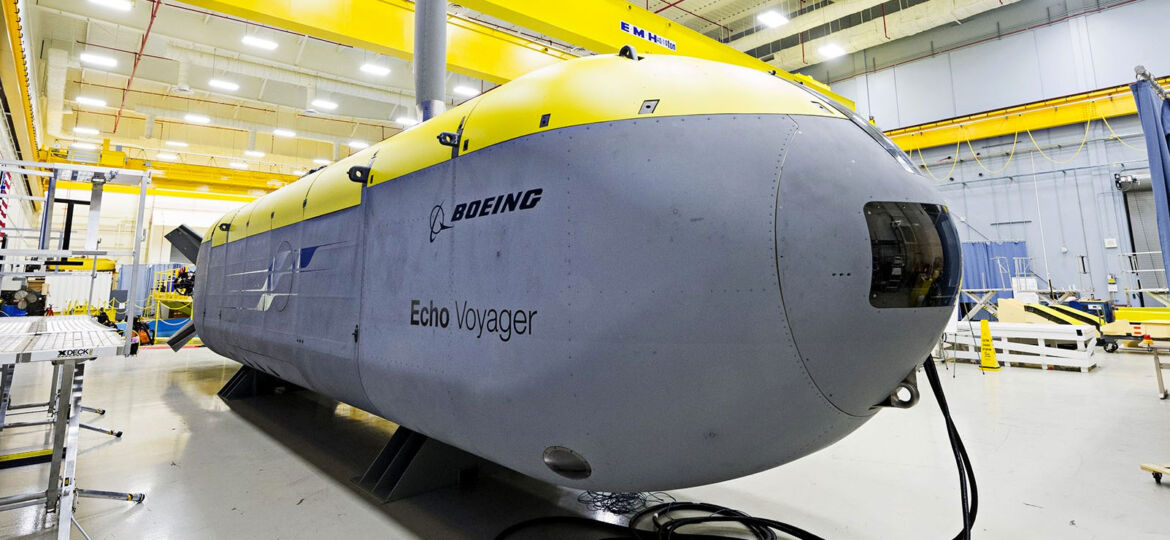
WHY THIS MATTERS IN BRIEF
The future of warfare is autonomous, but undersea, autonomous drones and submarines have a lot of civilian capabilities too.
A year after DARPA launched its own fully autonomous mine hunter and a few months after they announced they plan on building American undersea drone highways that span the oceans Boeing has announced that it is teaming up with America’s largest military shipbuilder, Huntington Ingalls Industries (HII), to work on underwater drones for the US Navy.
The new partners, a match arguably made in sea water, want to create drone submarines together, and who knows, one day those submarines might give the Russian’s forty ton autonomous, nuclear capable, drone submarine, the one that was recently discovered off of the US East coast, a run for its money.
Boeing has been working on drone subs for a while, namely with its Echo Voyager, a 51 foot long fully autonomous sub that can operate at sea for months at a time, and now, adding HII to the project will help both companies up their game in the area.
“This partnership provides the Navy a cost effective, low risk path to meet the emergent needs that prompted the Navy’s Advanced Undersea Prototyping program,” said Darryl Davis, the president of Boeing Phantom Works, “we are combining Boeing’s preeminent [unmanned underwater vehicle] maritime engineering team with our nation’s leading shipbuilder and Navy technical services company to get operational vehicles to the Navy years ahead of the standard acquisition process.”
While a recent trio of studies looking at the future of the US Navy paid more attention to aircraft carriers, which themselves increasingly look like they’re going to be turned into drone factories, than drones, the US military’s interest in drones is undeniable – whether it’s fully autonomous drone squadrons operating out of Jacksonville, Florida, semi-autonomous warships, autonomous drone F-35’s, or unmanned hypersonic SR-72’s, or swarms of drones there’s one undeniable, inescapable fact. The drones are coming.
Oh, and increasingly, they’re armed… although how long all of that will continue for will be down to the UN, who later this year are going to debate whether or not to ban what they call “killer robots.”
















